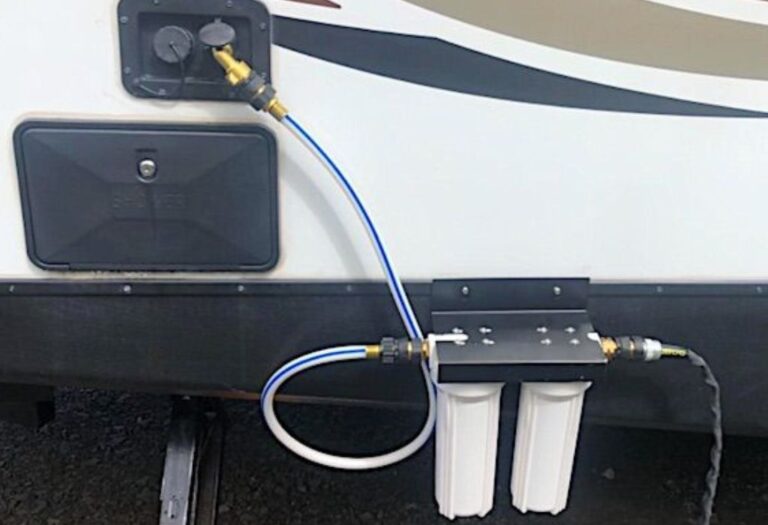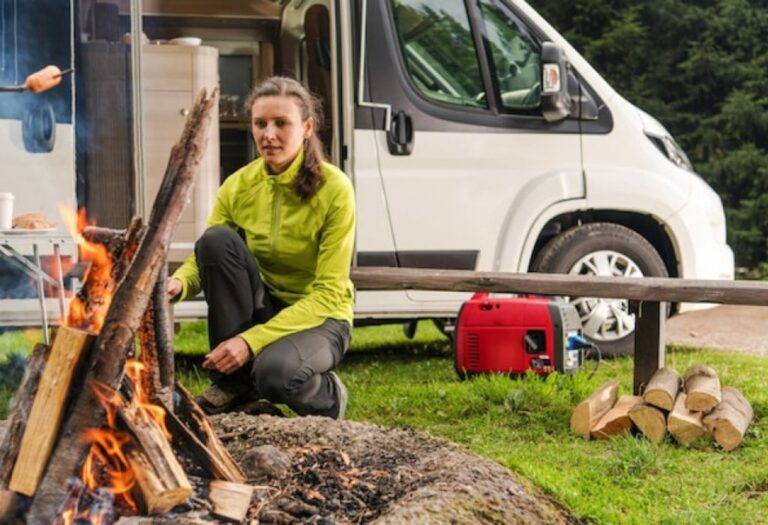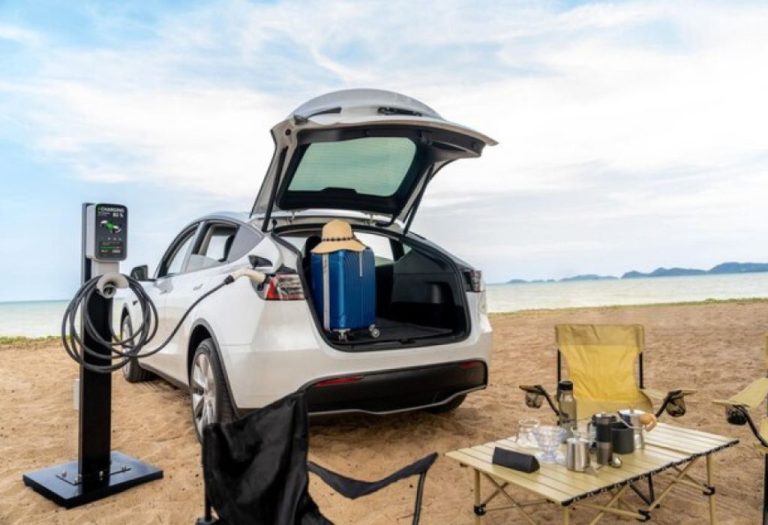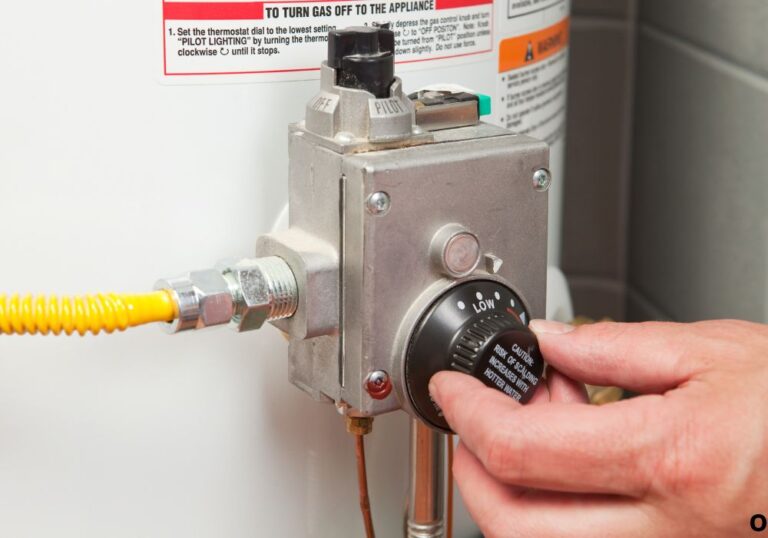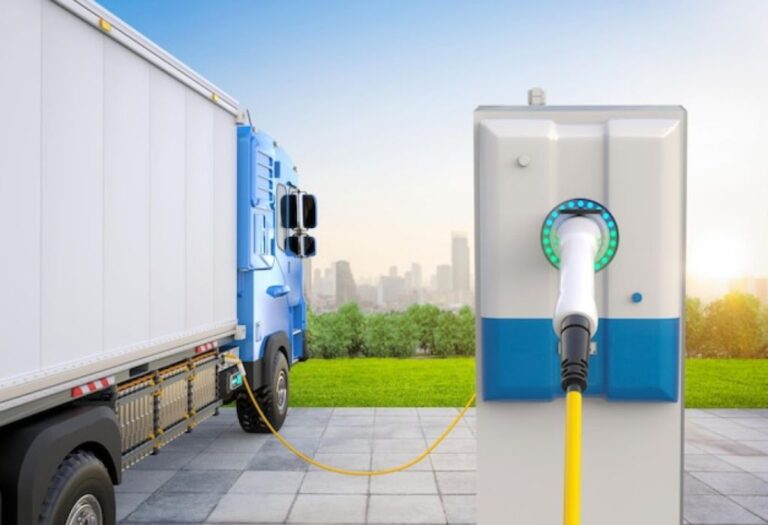How Much Water Pressure Is Safe for an RV?
Imagine pulling into a beautiful campground after hours on the road.
You hook up your RV to the city water line, turn on the faucet, and suddenly hear a hissing sound followed by water dripping from beneath the sink.
What should have been a relaxing start to your trip now turns into a small plumbing nightmare.
This is a common experience among RV owners who underestimate one simple factor — water pressure. Many campgrounds have water pressure that can spike above 80 PSI, while most RV systems are designed to handle no more than 60 PSI.
According to the RVIA Plumbing Standard 2018, excessive pressure is one of the leading causes of water line failure in recreational vehicles.
When pressure exceeds safe limits, even a tiny leak can turn into a costly repair. On the other hand, too little pressure leaves you frustrated with weak showers and slow faucets.
Understanding the right balance is the key to protecting your RV plumbing system and ensuring a consistent water flow wherever you camp.
In this guide, you’ll learn how much water pressure for RV systems is ideal, how to measure it, and how to regulate it safely.
You’ll also discover the role of pressure regulators, gauges, and maintenance that prevent leaks and keep your RV plumbing efficient.
Before connecting your hose to the next campground supply, take a moment to understand how water pressure truly affects your RV.
The right PSI setting can make the difference between smooth travel and an expensive plumbing disaster.
What Is Water Pressure and Why It Matters in an RV
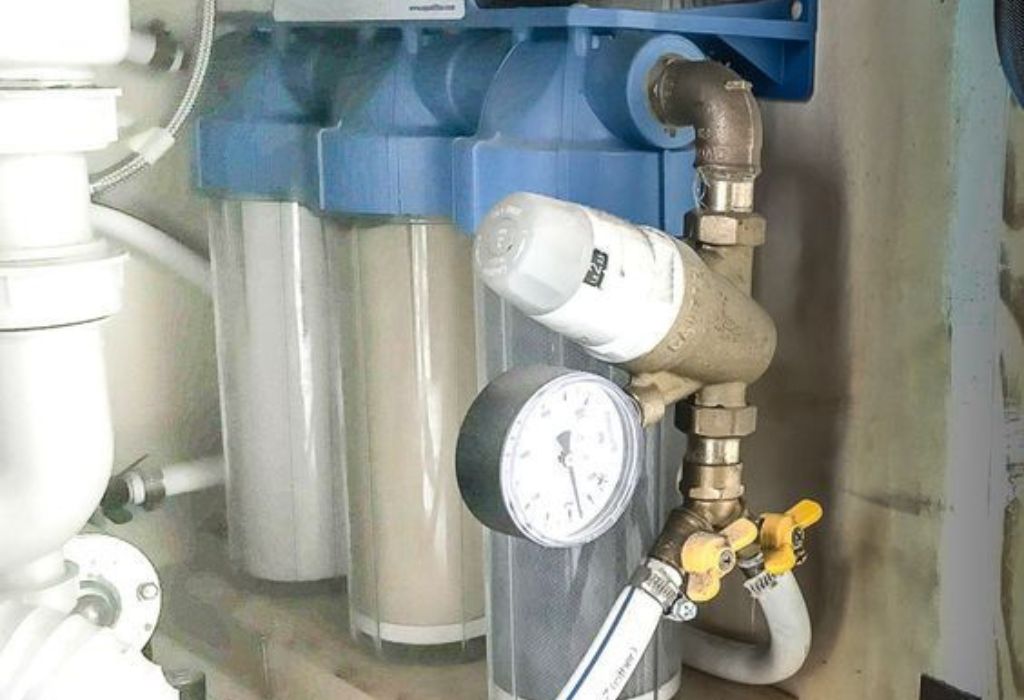
Water pressure is the force that pushes water through your RV’s plumbing lines, measured in PSI (pounds per square inch). It determines how fast water flows from your faucets, shower, and appliances.
Unlike home plumbing, RV systems are lightweight and compact. Even small pressure spikes can stress fittings, hoses, and valves — leading to leaks or bursts.
When you ask, how much water pressure for RV is safe, you’re really asking how much force your plumbing can handle before it fails.
Definition and Measurement
Water pressure is usually checked using a pressure gauge connected to your water inlet or regulator. It shows how much force water exerts inside your system.
What does PSI mean?
PSI stands for pounds per square inch — a measure of water pressure strength.
What is static water pressure?
Pressure measured when water isn’t flowing in your system.
What is dynamic water pressure?
Pressure recorded when faucets or showers are open.
Why is static pressure important?
Because it indicates how much strain your plumbing endures even when not in use.
Does altitude affect water pressure?
Yes, higher elevations can slightly lower effective pressure.
RV Plumbing Ratings and Limits
Residential systems can tolerate up to 80 PSI, but RV plumbing is weaker. Most RV hoses and fittings handle about 40–60 PSI safely.
If you’re unsure how much water pressure for RV setups is safe, check your owner’s manual — it often lists maximum PSI ratings.
What pressure can RV plumbing handle?
Usually 60 PSI or below.
Are water pumps preset?
Most shut off automatically around 45–55 PSI.
Which components are most vulnerable?
Plastic fittings, connectors, and old hoses.
Should you check your RV manual?
Yes, every model varies.
What happens if pressure exceeds the limit?
Leaks, burst lines, or water heater damage.
What Is the Ideal Water Pressure for an RV?
Every RV manufacturer and expert agrees that the ideal water pressure range is between 40 and 55 PSI.
That’s enough for comfortable showers and faucet flow, but low enough to protect pipes.
According to Fresh Water Systems and RV Life Magazine, many campgrounds have unregulated supplies reaching 80–100 PSI — double what an RV can handle safely (source).
Industry Norms and Expert Consensus
Experts recommend keeping water pressure below 60 PSI. Older RVs should stay closer to 45 PSI.
What is the safe PSI for most RVs?
Around 45–55 PSI.
Is 60 PSI acceptable?
It’s the upper limit — anything higher is risky.
Is 30–40 PSI too low?
Not harmful, but can feel weak for showers.
Should older RVs use lower pressure?
Yes, around 40–50 PSI.
Can pressure above 60 PSI ever be safe?
Only with a high-quality regulator.
RV Type and Plumbing Material
Modern RVs use PEX piping, which handles more pressure than older PVC systems. Still, regulators are essential.
Do newer RVs handle higher pressure?
Yes, slightly, thanks to stronger materials.
Does plumbing material matter?
Absolutely. PEX is more flexible and durable.
Are Class A coaches more durable?
Yes, their systems are often reinforced.
Should older trailers use caution?
Yes, they’re more vulnerable to high pressure.
Does water temperature affect PSI tolerance?
Yes, hot water can weaken hoses, reducing safe limits.
Risks and Dangers of Incorrect Water Pressure

Both too much and too little pressure can cause trouble.
Overpressure Risks
Excessive pressure can blow fittings, split hoses, and damage your water heater or pump.
What happens if pressure is too high?
Pipes and fittings may burst.
Can hoses explode?
Yes, especially older or cheap hoses.
Are faucets and fixtures at risk?
Yes, seals and threads can crack.
Can high pressure damage your water heater?
Absolutely — internal connectors may rupture.
Is cumulative stress dangerous?
Yes, even short bursts weaken plumbing over time.
Under-Pressure Problems
Low pressure isn’t destructive, but it’s inconvenient. Weak flow makes showers frustrating and washing dishes slow.
What causes low pressure?
Long hose runs, clogged filters, or restrictive regulators.
Does it affect water heaters?
Yes, they may not cycle properly.
Is low pressure harmful?
Not usually, but it signals a restriction.
Can it reduce water efficiency?
Yes, you might use more water trying to compensate.
Is it common at campgrounds?
Yes, especially when multiple RVs share one water line.
How to Measure and Test Your RV Water Pressure
Measuring PSI is simple with the right tools.
Tools You’ll Need
A pressure gauge connects to your water inlet or regulator to show PSI instantly.
What gauge should you buy?
Choose one rated up to 100 PSI.
Where to attach the gauge?
To the city water inlet or spigot.
Should you test static or flowing pressure?
Both. Static shows max force; dynamic shows operating pressure.
Do adjustable regulators include gauges?
Many do, helping you monitor PSI in real time.
Is digital better than analog?
Digital gauges are easier to read but not necessary.
Step-by-Step Testing
Attach the gauge, open the water source, and note the reading. Then open a faucet to measure dynamic PSI.
Should you test before regulator?
Yes, to see incoming campground pressure.
Do you test after adjusting regulator?
Always. Verify that the PSI stays safe.
How often should you check?
At every new campsite.
Should readings vary?
Slightly — but large swings indicate a bad regulator.
Can you leave the gauge connected?
Yes, for continuous monitoring.
Choosing and Using a Water Pressure Regulator
A pressure regulator is your RV’s first line of defense against plumbing damage.
Types of Regulators
There are two main types — fixed and adjustable.
What is a fixed regulator?
A preset model (often 45 PSI) you simply attach and forget.
What is an adjustable regulator?
One you can fine-tune between 30–75 PSI.
Why pick one with a gauge?
It lets you see exact pressure at a glance.
Are adjustable models safe?
Yes, when properly used.
Do all regulators fit standard hoses?
Most use universal threads.
Installation and Placement
Always install the regulator at the spigot before your drinking water hose.
Where should it go?
At the campground spigot, not inside your RV.
Should you use Teflon tape?
Yes, for watertight seals.
Do you install before or after filters?
Before filters, to protect them.
Is direction important?
Yes, follow the arrow toward RV.
Can you install it permanently?
Yes, but removable options make maintenance easier.
Adjusting and Maintaining
If using an adjustable regulator, tweak the screw until PSI reads correctly.
When to adjust?
When pressure exceeds 60 PSI.
How to adjust safely?
Turn the screw slowly while watching the gauge.
How often to check it?
Every time you change campgrounds.
How to clean it?
Flush debris and check O-rings.
When to replace it?
Every few seasons or if pressure fluctuates abnormally.
Real-World Examples and Lessons Learned
Common Scenarios
Consider a campground supplying 90 PSI without regulation — one owner’s kitchen hose burst instantly. Another, with a 45 PSI regulator, had perfect flow all week.
What happened at 90 PSI?
Unregulated water destroyed fittings.
What if the regulator fails?
Pressure spikes can damage your system unnoticed.
Can gradual pressure rise cause damage?
Yes, over time seals wear down.
Is there proof?
Yes, RV forums are full of leak reports (RVNetwork discussion).
What’s the safe practice?
Always use a regulator rated for 45–50 PSI.
Takeaways
Even a $15 regulator can save thousands in repairs. Regular checks ensure consistent PSI and peace of mind.
What is the best default setting?
Around 45–50 PSI.
Should every RV use a regulator?
Yes, always.
Are campground gauges trustworthy?
Not always — test with your own gauge.
Can short spikes cause leaks later?
Yes, micro-cracks develop over time.
Is a smart regulator worth it?
Yes, it automatically adapts to incoming pressure.
Troubleshooting Common Pressure Problems
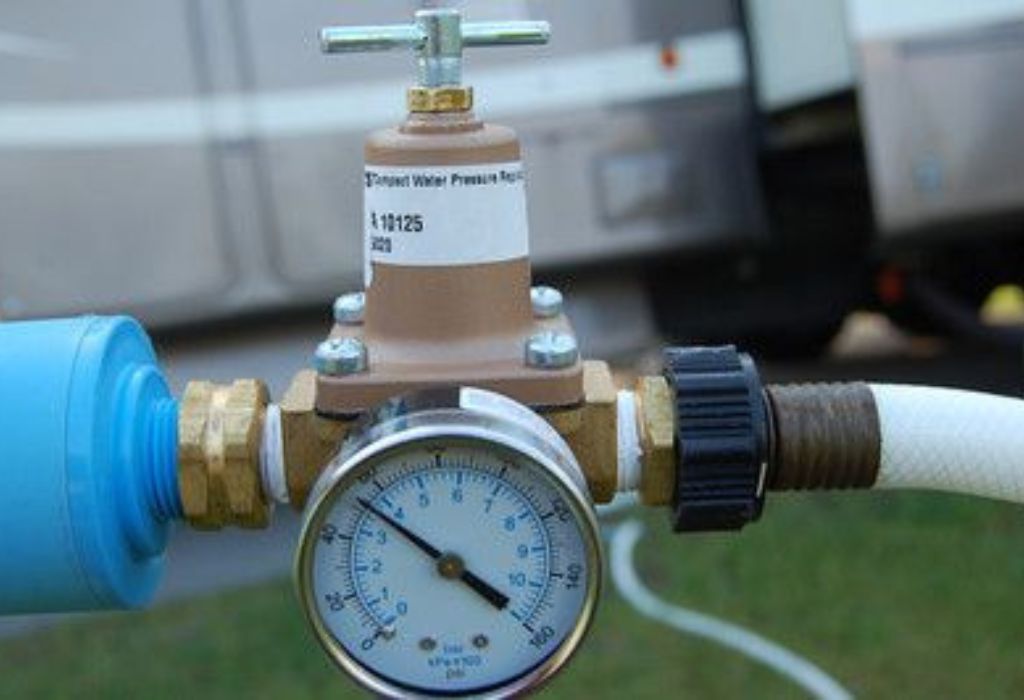
Low Pressure After Hookup
Low flow often means restriction or clogging.
Why is water weak?
The regulator may be set too low.
Could the filter be clogged?
Yes, replace or clean it.
Does hose diameter affect pressure?
Yes, narrow hoses restrict flow.
Are faucets blocked?
Clean aerators and showerheads.
Can long hoses reduce pressure?
Yes, friction loss lowers PSI over distance.
Fluctuating or Surging Pressure
Sudden jumps in pressure indicate trapped air or regulator failure.
Why does pressure fluctuate?
Air in lines or faulty pump.
Can regulators wear out?
Yes, debris buildup causes inconsistency.
Is backflow an issue?
Sometimes — install a backflow preventer.
How to fix it?
Purge air and inspect regulator.
Should you use an accumulator tank?
Yes, it smooths out pressure changes.
Leaks and Ruptures
Leaks mean excessive PSI or weak fittings.
What causes bulging hoses?
Overpressure inside the line.
How to detect hidden leaks?
Run water and inspect every joint.
Can connectors fail silently?
Yes, especially plastic ones.
Replace or repair?
Replace damaged parts immediately.
Need professional help?
Yes, for hidden or recurring leaks.
Seasonal and Long-Term Maintenance
Winterizing and Depressurization
When storing your RV, always depressurize and drain the system.
Should you bleed pressure before storage?
Yes, prevents freeze damage.
How to drain water lines?
Open all faucets until dry.
Remove the regulator?
Optional, but helps remove trapped water.
Does antifreeze affect pressure?
No, it protects lines without increasing PSI.
Should pressure read zero when stored?
Yes, always.
Routine Inspections
Annual checks prevent leaks and ensure stable flow.
How often to inspect hoses?
Every season.
When to replace hoses?
Every 5–10 years or at first wear signs.
Check the regulator often?
Yes, replace if readings fluctuate.
Watch for corrosion?
Yes, metal parts can rust and reduce flow.
Protect from sunlight?
Yes, UV weakens exterior hoses.
Conclusion
Maintaining the correct water pressure for your RV is simple yet crucial. The sweet spot lies between 40 and 55 PSI, with 60 PSI as your absolute upper limit.
Always test campground water pressure, use a reliable regulator with a gauge, and inspect hoses regularly. These small habits save you from leaks, water damage, and costly repairs.
Before your next trip, make it routine: test, regulate, and relax — because balanced water pressure keeps your RV running smoothly, no matter where the road takes you.
I’m David R. Coleman, the founder, lead writer, and lifelong tool enthusiast behind GarageToolPro.com. With years of experience in automotive repair, woodworking, and home DIY projects, I created this platform to share practical tips, detailed tool reviews, and step-by-step guides that help mechanics, hobbyists, and homeowners get the job done right the first time.

